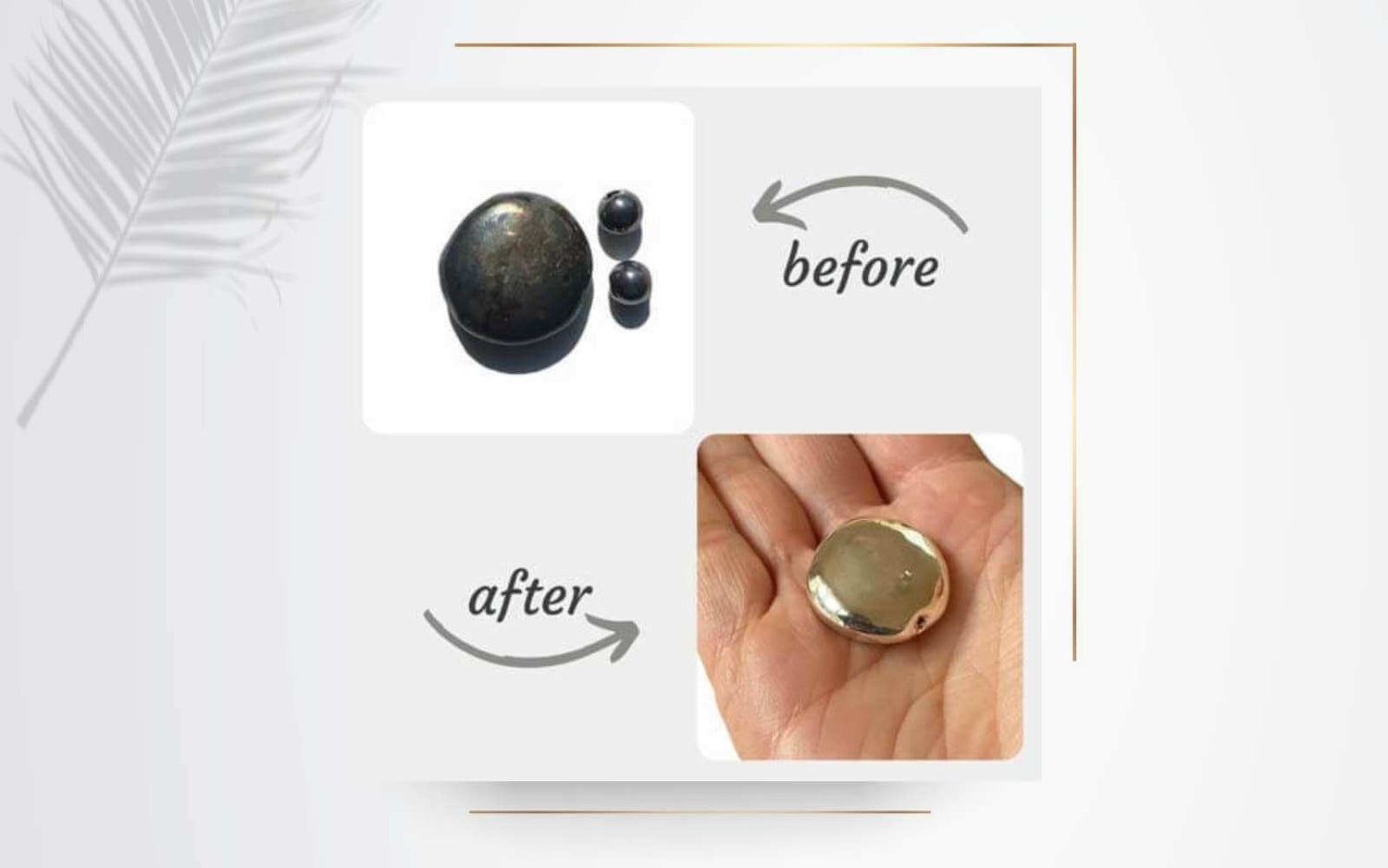
How to Clean Silver At Home
Silver is a shiny precious metal that needs a little love and care to keep it at its best. It will naturally tarnish with exposure to the air, environment, chemicals and perspiration. Proper care and maintenance are necessary for any piece of your silver jewellery, cutlery or decoration. If you follow our recommended tips on how to clean silver at home, you will be amazed at how easy it is to get great results!
What Is Sterling Silver?
Sterling silver is a versatile and natural precious metal most commonly used in high-quality jewellery, cutlery or decorations. Sterling silver is the most famous silver alloy and has been used for centuries around the world. It consists of 92.5% pure silver with 7.5% of some base metal, usually copper, added for strength. Pure silver is too soft for use in jewellery. Sterling silver is a natural metal and is typically hypoallergenic which makes it great for anyone with skin sensitivity issues when used in jewellery.
High-quality sterling silver jewellery can be rhodium plated to enhance the whiteness, brilliance and durability of the metal. This adds value to the piece and prevents tarnishing.
To assure your jewellery or any other piece has the right purity of sterling silver always check for a hallmark. It is a legal requirement in Ireland to have precious metal jewellery hallmarked by an independent assay office when it falls into a certain weight category. The hallmark comprises three compulsory marks: a sponsor’s mark, a fineness mark and an assay office mark.
Why Does Silver Tarnish?
Over time, silver will change colour and darken as it oxidises. It is prone to tarnishing because of the chemical reaction with air and other metals in it, usually the copper content in the alloy. The copper reacts with sulphur in the air to form a layer of the compound copper sulphide. The colour of the tarnish on silver changes as the tarnishing process advances. In the early stages of tarnishing the colour changes from yellow to red-brown to blue. Black tarnish is the true colour of silver sulphide which also means that the tarnish process is extremely developed. For these reasons it is important to learn how to clean silver effectively.
A couple of factors influence the tarnishing process as explained by the Sheffield Assay Office:
- The rate that silver tarnishes depends on the concentration of sulphur in the air
- Relative humidity also affects the tarnishing rate. Ideal conditions are where the relative humidity is below 50%.
- Fingerprints and sweat from hands and skin contain salts, oils, and moisture. They easily transfer onto silver and can lead to corrosion. Salt from fingerprints reacts with silver to form silver chloride, which is light-sensitive and can darken over time, resulting in fingerprint stains.
- The materials used for packaging can also promote tarnishing. High sulphur and other tarnish-causing compounds released from paper, cardboard, foams and adhesives are a common problem. Most jewellery companies state that their packaging does not contain tarnish-accelerating chemicals.
Pure silver is less prone to tarnish, but will still react to form silver sulphide.
It may seem daunting and complicated but it is surprisingly easy and simple to learn how to clean silver at home. Give it a go, you will be amazed!!
How to Prevent Tarnish?
The two most important ways of preventing and keeping your silver sparkling and tarnish-free are caring for and storing it properly. Here are some helpful tarnish-preventing tips and tricks you can use before you master how to clean silver at home.
Caring Tips for Silver
- Always remove your jewellery when going swimming, showering, doing the housework, gardening, DIY or relaxing on the beach.
- Make accessorising the last finishing touch to avoid direct contact with chemicals such as perfume, hairspray, body lotions and foundations. Allow all products to dry before putting your silver jewellery on.
- Remove your jewellery before exercising to prevent it from breaking and getting in contact with sweat.
- Remove your silver when preparing, cooking or eating foods that contain sulphur
- Don't be afraid to wear your silver. Friction slows down tarnishing, which means the more you wear it, the more it will shine.
Storing Tips for Silver
- Keep your silver in a dark, cool and moisture-free area
- Keep your silver jewellery in a jewellery box or an airtight plastic bag when you are not wearing it. This slows down the development of tarnish.
- Separate your silver pieces and store them individually to prevent tangling, breaking or scratching
- Always wipe your silver with a polishing cloth after wearing it and before storing
- Keep silica gel sachets with your silver to absorb excess moisture
How to Clean Silver at Home – 7 Easy Steps
The following process explains how to clean silver at home. It is simple, easy and cost-effective. All you need is probably already in your kitchen cupboard. Also, this method of cleaning silver is eco-friendly compared to using commercial chemical solutions. Follow the following steps:
1. Line a small bowl with aluminium foil, making sure that the shiny side is facing up
2. Add two teaspoons of baking soda (bicarbonate of soda) to the bowl. Add more when using more water for bigger pieces.
3. Place your silver into the foil-lined bowl. Remove any gemstones or wrap them well into aluminium foil to protect them from water and heat.
4. Pour boiling water into the bowl to cover the silver items
5. The water will begin to bubble. Leave it for around 5 minutes
6. Rinse your pieces under cold water, pat dry and leave to dry completely
7. Repeat the process for every tarnished piece or rub gently the tarnished area with the bread soda from the bowl
How Does Baking Soda Clean Silver?
When baking soda, aluminium foil and water are combined, they create a chemical reaction known as ion exchange. The magic behind this method is the way that the tarnish coating on the silver reacts with aluminium. Sulfur atoms, which stick to the silver to create silver sulphide, known as tarnish, are carried by the solution and transferred to the aluminium. Aluminium sulfide is formed leaving your silver sparkling.
How to Clean Silver at Home - Commercial Products
There are many commercially available products in the form of pastes, dips and clothes. Polishing clothes and wipes are the most convenient to use. Light cleaning with a polishing cloth will avoid the need for abrasive cleaners. Focus on maintaining long up-and-down strokes to clean your piece. Be sure to use different parts of the cloth to avoid spreading any tarnish. Our favourite brands are Connoisseurs and Hagerty.
Conclusion
Now that you know how to clean silver and take care of it a little bit better, there is little excuse for your silver not to look as good as the day you bought it. You will be proud of your silver pieces and happy to enjoy them for years to come.
Be sure to check out our beautiful Sterling Silver collection by clicking the link below.
References:




